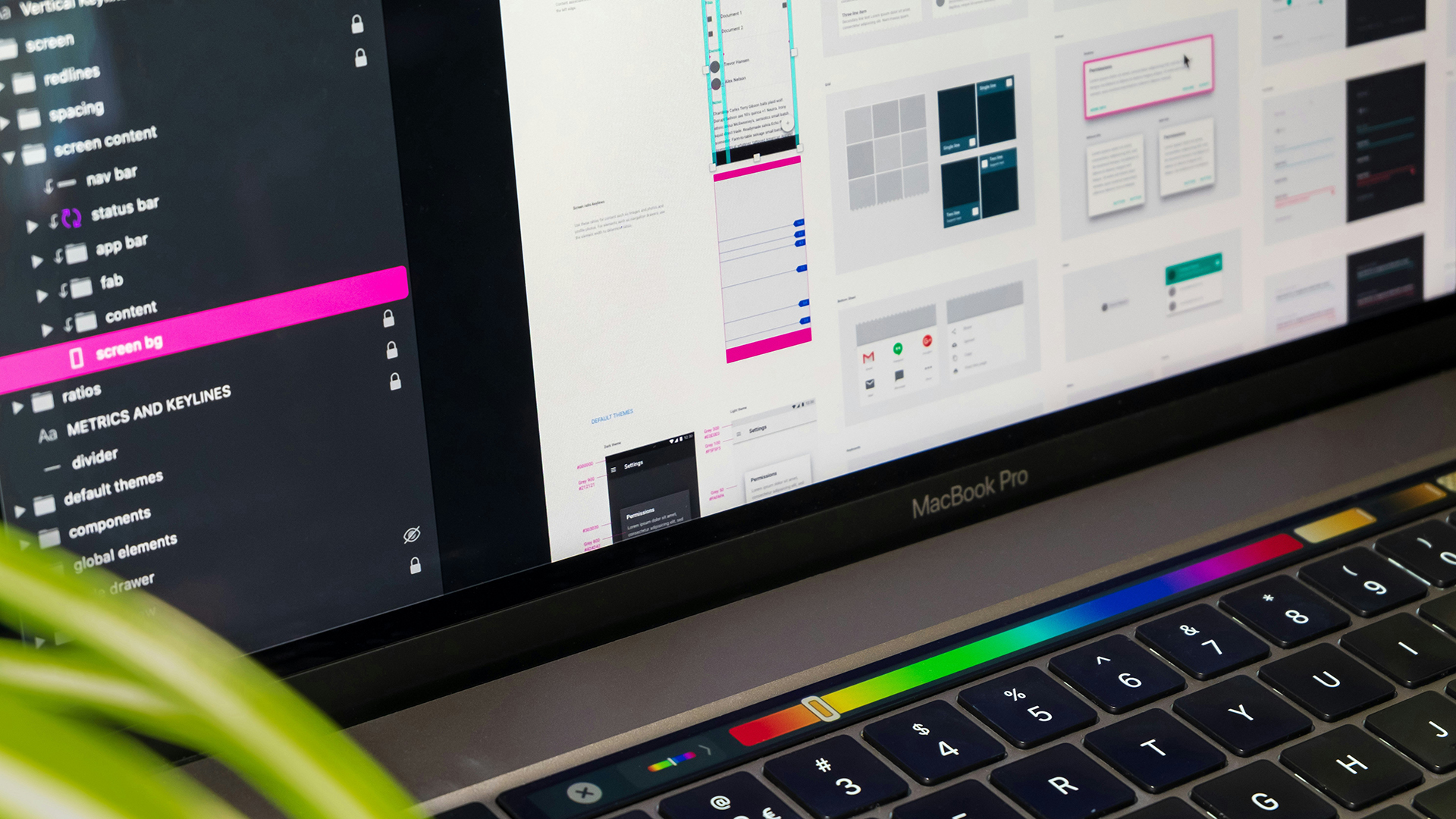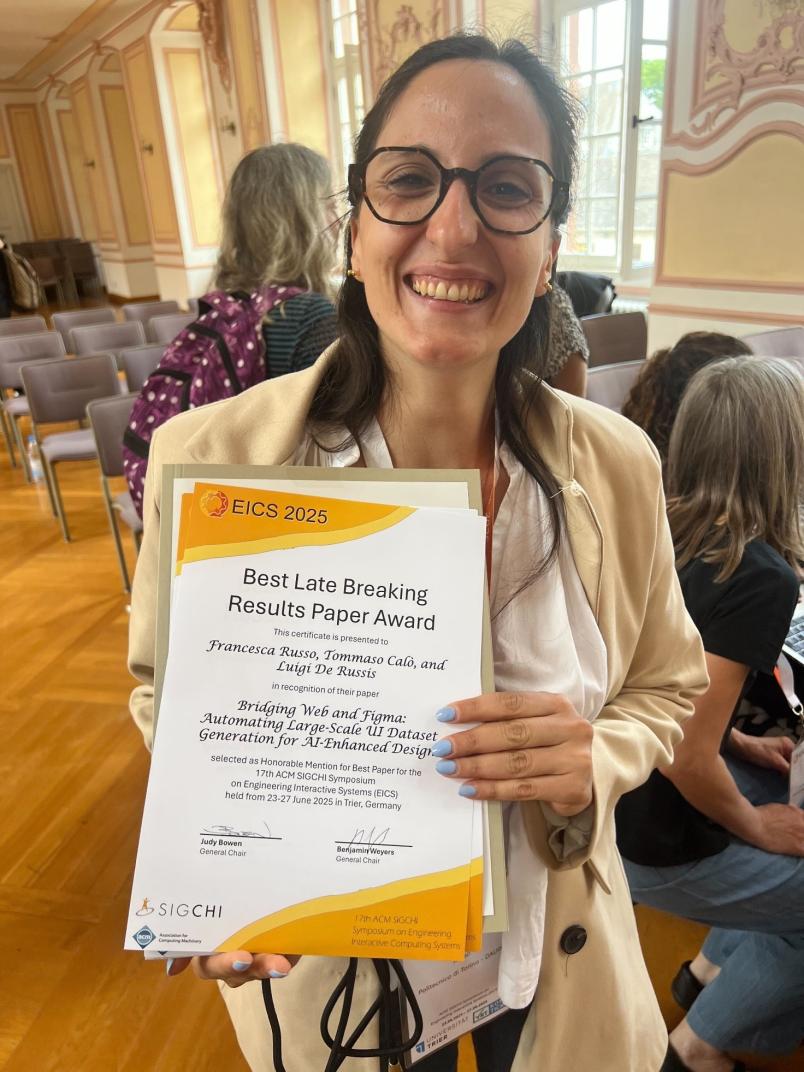
DAUIN PhD student receives the "Best Late Breaking Results Award" for her contribution to AI in user interface design

Francesca Russo, a PhD student in Artificial Intelligence at the Department of Control and Computer Engineering (DAUIN), has received the "Best Late Breaking Results Award" at the 17th ACM SIGCHI Symposium on Engineering Interactive Computing Systems (EICS 2025). This award highlights the importance of Russo’s work in the field of Artificial Intelligence (AI) applied to graphic interface design.
The award-winning paper, titled "Bridging Web and Figma: Automating Large-Scale UI Dataset Generation for AI-Enhanced Design", was developed in collaboration with Professor Luigi De Russis and Dr. Tommaso Calò, within the e-Lite research group at DAUIN.
The research addresses a crucial challenge in the development of AI-based tools to support graphic interface designers: the lack of large-scale data. Existing public datasets are manually annotated, a costly and time-consuming process that limits their scalability, or they lack semantic labels and hierarchical relationships, which are essential for ensuring good performance of AI models. Furthermore, no dataset offers a standard format for training models that can be directly integrated into tools used for interface design, such as Figma.
Russo's work introduces an automated pipeline that converts any HTML/CSS content into Figma-compatible representations, maintaining crucial information such as the position and type of elements within the graphical interface. This approach eliminates the need for manual annotations, allowing for the creation of large-scale datasets essential for training intelligent assistants for graphic interface design.
The pipeline was validated by applying it to WebUI, a well-known website dataset. Subsequently, a comparative evaluation was performed by training five AI models for layout generation on both the data produced by the pipeline and on Rico, a widely used dataset that contains the same layout information but is manually annotated. The results demonstrate that the models achieve similar performance on both datasets, suggesting that the proposed pipeline produces data of comparable quality to that created manually. The next step in the research will be to leverage these advancements to create intelligent assistants to be integrated into the daily work tools of interface designers.